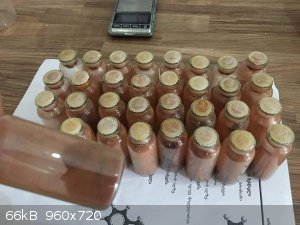
vano - 15-10-2021 at 22:50
Hi. I have Sulfarsazene i want to make other more useful and interesting organoarsenic compound, because this azo compound isn't useful for me. I will accept
any idea.

Boffis - 16-10-2021 at 08:53
Hi Vano, I an not sure what world constitute "interest" to you but dithionite with cleave the diazo and diazoamino groups to give you sulphanilic
acid, p-phenylenediamine and an o-aminophenylarsonic acid. The nature of the latter compound will depend on whether the nitro group in the 5 position
is reduced by the dithionite. The nitro group may be resistant enough to survive and leave you with 2-amino-5-nitro-phenylarsonic acid. This later
compound can be diazotised and coupled with chromotropic acid to prepare nitroarsenazo I and III (a reagent for Th, U, RE, Ba etc).
Separating the mixture might be difficult but in one of the books in the SM library on dye chemistry there is a section on the analysis of dyes and
for azo dyes the reduction of azo dyes to amines and their isolation as a gravimetric means of determining the components from which the azo dyes
where made.
The dye itself appears to have been used as a reagent for various metals and there is a fair amount of data available on its use (in Welcher's
"Organic Analytical reagents" to which I posted links on SM before).
vano - 16-10-2021 at 09:03
Thank you Boffis! I don't have dithionite, which compound can i use instead?
Boffis - 16-10-2021 at 21:36
The other reducing agent used for splitting azo dyes is stannous chloride but the newer thiourea dioxide may also work. On the forum library is the
book "Fundamental principles of dye chemistry" check this out:
http://library.sciencemadness.org/library/books/fundamental_...
From about page 400 to 410 it gives an overview of this method and the separation of some of the products.
vano - 17-10-2021 at 02:37
Thanks Boffis! I tried reduction with atomic hydrogen.
unionised - 17-10-2021 at 05:11
Don't forget that reduction of arsenic compounds can lead to arsine- which isn't nice.
The Sulfarsazene was probably very pure when it was new, but it's possible that some hydrolysis/ photolysis / whatever will have set some arsenate
free over the years.
vano - 18-10-2021 at 06:12
Thank, yes i know how hazardous it is. This vials were in dark room, also in box. Head of vials were covered with wax, so it's looks like new.
